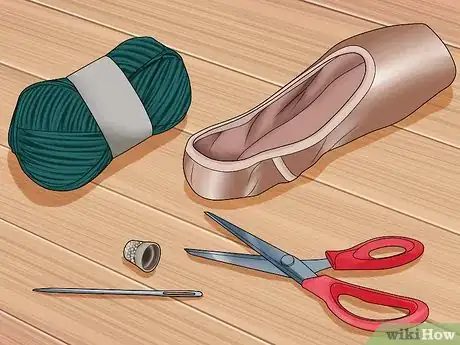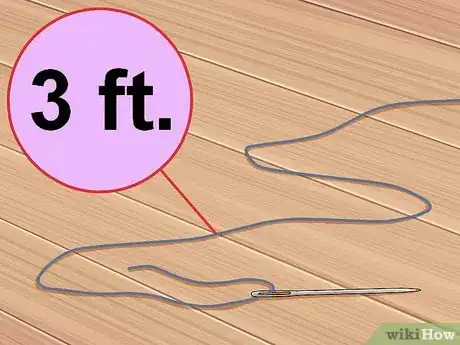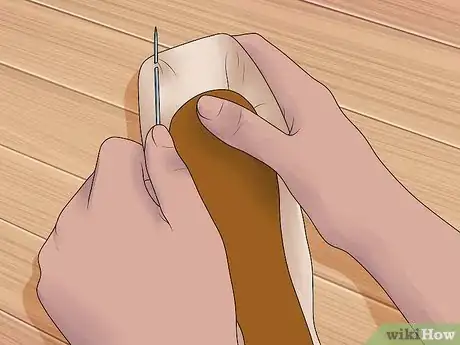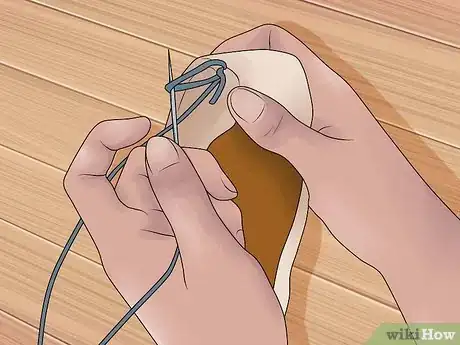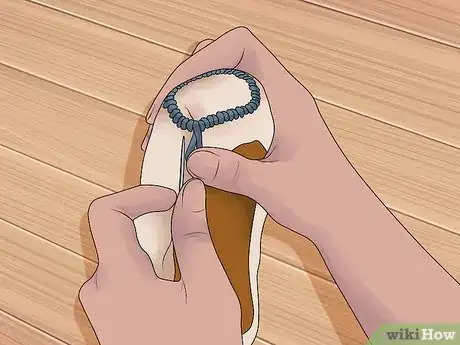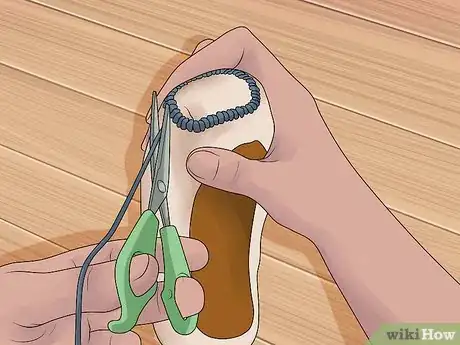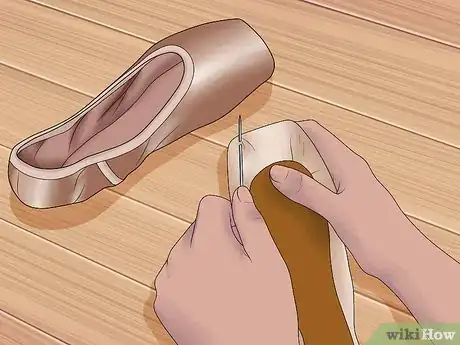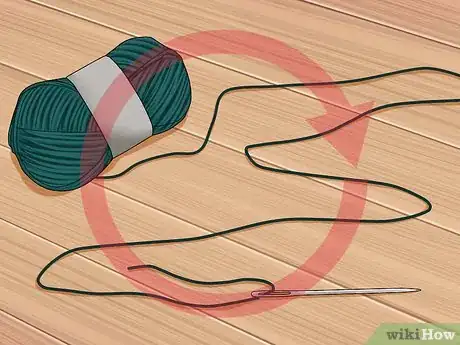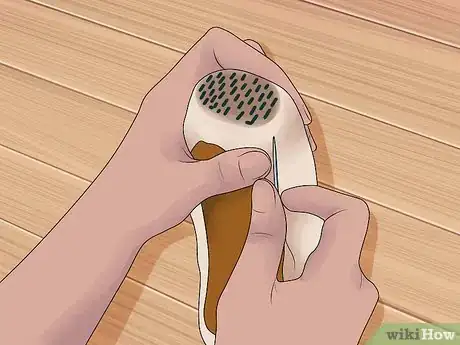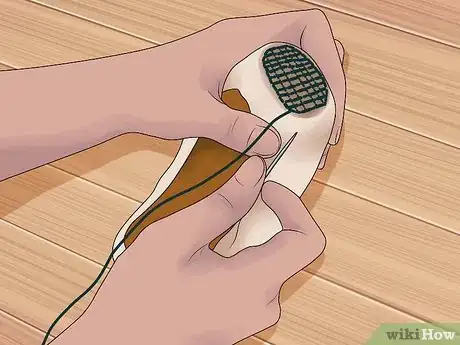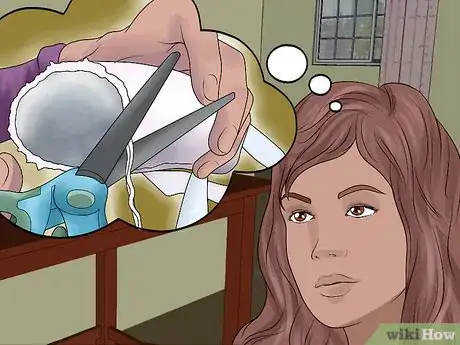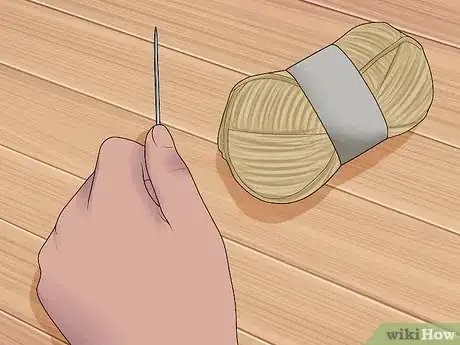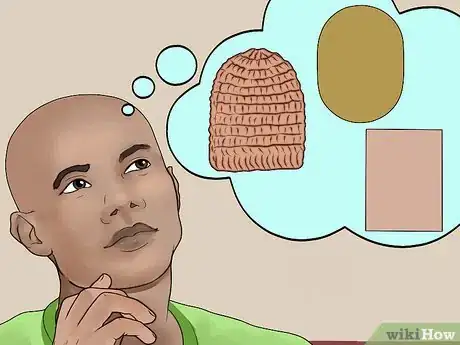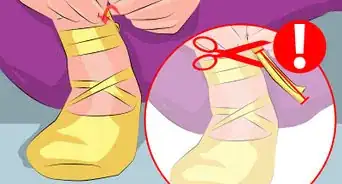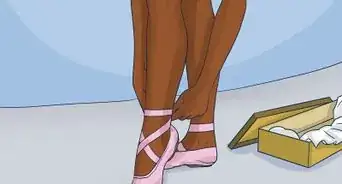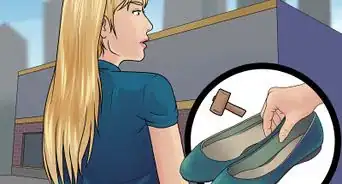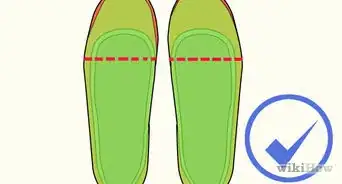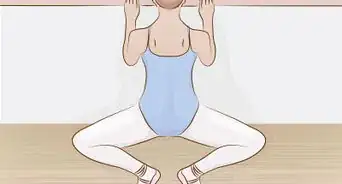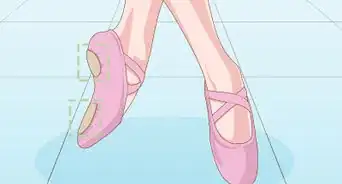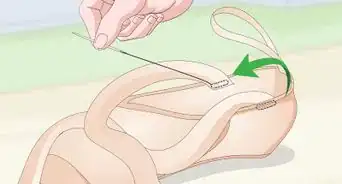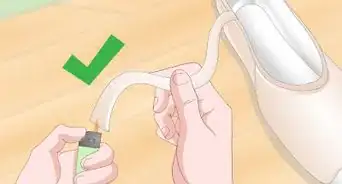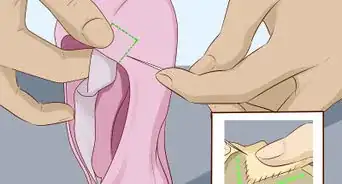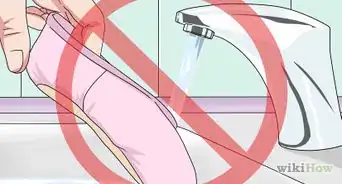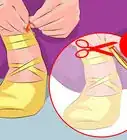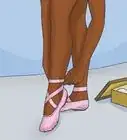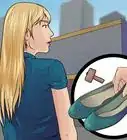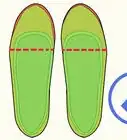This article was co-authored by Geraldine Grace Johns. Geraldine Grace Johns is a Professional Ballerina and the Owner of Grace Ballet in New York and Los Angeles. Geraldine toured through New Zealand, Australia, Japan, and Korea as Jammes in Ken Hill's Original Phantom of the Opera. She has studied with the Royal Academy of Dance in London to become a teacher and taught for the Kudo School of Ballet in Yokohama. Geraldine also ran her own Royal Academy of Dance School in New Zealand before studying at the Neighborhood Playhouse School of the Theatre in New York City. Geraldine was a guest coach and Master Class teacher in Toronto for the Canadian Royal Academy of Dance's Dance Challenge in 2018, 2019, and 2020. She was also a guest coach and Master Class teacher for the USA Royal Academy of Dance Challenge in Long Beach, California in 2019 and 2020. Grace Ballet Los Angeles has won recognition as one of 13 Best Ballet Schools in Los Angeles since opening her school. Geraldine is a contract Practical Teaching Supervisor for the Certificate in Ballet Teaching Studies for the Royal Academy of Dance.
This article has been viewed 507,764 times.
Although darning pointe shoes has fallen out of practice over time, darning your shoes can give your more traction and balancing support as you dance. Darning your pointe shoes may take some time and patience, but this long-standing ballet tradition can significantly increase the life of your shoes.
Steps
Darning The Pointe Shoes
-
1
-
2Thread the needle. You will need to thread approximately two arms-length or about three feet of thread.[5] Insert your darning thread through the eye of the needle. You can use single threading to make your darning especially fine, but it is also acceptable to double up and knot the two thread ends together once you have thread the needle.[6]
- Darning thread can be found at nearly any sewing or craft store.
- Cut the excess threading off from the end of the knot.
Advertisement -
3Make the first darning stitch. Hold the pointe shoe with the sole of the shoe facing you, and the front of the shoe facing away from you.[7] Insert the needle at the back of the pointe platform, near the top of the satin pleats. Pass the needle through the satin and through the platform material at an angle starting below, from the outer, side edge of the platform, and pushing it up diagonally, to the top, inner edge of the platform.[8]
- Push the needle completely though the shoe, and pull the thread all the way until the threaded knot reaches the shoe.[9]
-
4Make your first chain stitch. Insert the needle very close next to the stitching hole you just made. Again, pull the needle through the satin and platform material, and begin to pull the rest of the threading through. However, don't pull the thread tight, all the way through.[10] The thread will be in a loop before you pull it all the way through the shoe. When you see the loop of thread, pass your needle through the loop, and then pull the thread taut.[11] This will create your first chain stitch.
-
5Continue chain stitching around the platform of the shoe. Continue stitching around the platform of the shoe, inserting the needle through the satin and platform material and drawing the thread through the stitching loops, maintaining the chain stitch.[12] Be sure to not make the stitchings too outward on the sides of the platform, or else the darning won’t provide any effective traction while dancing.
- The spacing between the stitching isn’t too important, but they do need to be close together, and they do need to be relatively uniform.[13]
- There are different ways of doing it. For instance, some people prefer to do the outline first or start from the bottom of the pointe shoe and go up. Feel free to experiment!
-
6Secure the darning knot. Once you have chain stitched all the way around the platform of the pointe shoe and have come back to where you started darning, cut off the excess thread. You can cut pretty close to the last knot you made, but leave about a centimeter of leftover thread. You don’t have to make a final knot; the darning thread will stay in place since all of the stitches consist of knots.[14]
- Consider securing and sealing the last bit of excess thread by swiping it with a bit of clear nail polish. That will keep the thread sealed onto the shoe rather than hanging off freely.
-
7Darn your other pointe shoe. When you are finished darning one pointe shoe, repeat the same exact stitching method on your other shoe. You may find darning your second pointe shoe to be a bit easier and faster, now that you have one darned pointe shoe under your belt.
Darning The Entire Pointe Platform
-
1Rethread the darning needle. Darning the entire pointe platform is optional, but some dancers like having their pointe platform darned in this way. Rethread the darning needle with a large amount of thread. Consider using a couple arms-length of thread. You can double up and knot the two end pieces of thread, or you can leave it as a single thread.
- Remember, you rather have an excess amount of thread, than not have enough when you are in the middle of stitching.
-
2Create lengthwise stitches across the platform. Starting at the top of the platform near one side of the shoe, stitch parallel, horizontal rows across the face of the platform. Create about five doubled rows of stitches across the platform. When your stitches near the bottom of the platform close to the pleated satin, create your last horizontal, doubled over stitch.
- After your last horizontal stitch, tie a simple overhand knot as close to the shoe as possible, and snip off the excess thread.
-
3Connect the horizontal rows. Starting at the top of the horizontal rows, rethread your needle with more thread, and use the same chain stitching technique to connect two of the rows at a time. Just how you stitched around the platform, your chain stitches will move down the rows, to the other side of the platform face.
- When you get to the end of a horizontal row, continue to move down the rows, and connect them together. Eventually, you will connect all of the horizontal row stitches together, completely covering the face of the platform with darning.
Maximizing The Quality of Your Darning
-
1Decide to keep or remove the satin on the shoe platform. Some dancers remove the satin from the platform of the shoe (for even better grip along with the darning), but keeping or removing the satin is really based on your personal preference.
- If you decide to remove the satin from the platform of the shoe, use scissors and dig one of the blades in toward the side corners of the shoe platform, around the toe box.[15]
- Once you insert the tip of the scissors into the slight spacing between the sides of the platform and the rest of the shoe, cut away the satin only on the top, flat platform of the shoe.[16]
-
2Choose sturdy darning tools. For darning your pointe shoes, the darning thread should be beige, white, or pink, and should be a thick embroidery type of threading. Thick wool or cotton threading works really well. For the threading needle, use a thick needle with a large eyelet. You can also use a darning specific curved needle, but it’s all based on personal preference.[17]
- The needle must be thick and heavy duty, or else it will bend and break as you try to push it through the pointe shoe platform.
- You can find these specific shoe darning kits in ballet stores online.
- The color of the embroidery needs to be the same color as your ballet shoe, as the idea is that it stays unseen.
-
3Consider alternatives to darning. Since darning can be extremely tedious, some dancers mimic the stabilizing effects of darning by sewing crochet toe covers onto their pointe platforms, gluing suede patches onto their pointe platforms, or adding or moleskin sheets to their pointe platforms.
- All of these modification methods are less time consuming that darning, but can help pointe platforms last longer, while still providing a gripped surface for the pointe shoe.
Community Q&A
-
QuestionHow do I darn demi points?
 Felicity_smoakCommunity AnswerMany flat shoes come pre-sewn. Some are sewn in the back but not the front. If you have this type, I recommend putting your shoe on and marking where the elastics go. Then you can sew the elastics (hand sewing is more controlled). You should use thread in a close color to the shoe.
Felicity_smoakCommunity AnswerMany flat shoes come pre-sewn. Some are sewn in the back but not the front. If you have this type, I recommend putting your shoe on and marking where the elastics go. Then you can sew the elastics (hand sewing is more controlled). You should use thread in a close color to the shoe.
Things You’ll Need
- A pair of pointe shoes
- A study, darning needle
- Cotton or wool darning thread
- Scissors
- A thimble (optional)
Expert Interview
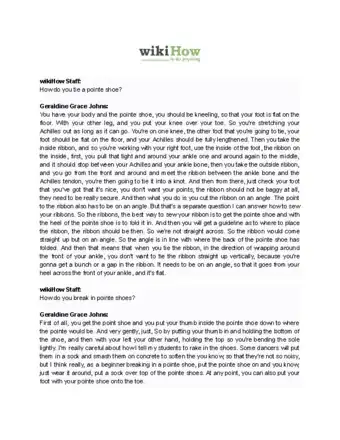
Thanks for reading our article! If you'd like to learn more about cleaning and repairing ballet shoes, check out our in-depth interview with Geraldine Grace Johns.
References
- ↑ https://www.youtube.com/watch?v=3mrN-c1S3-s
- ↑ https://www.youtube.com/watch?v=vXANXuSx5xA
- ↑ https://www.youtube.com/watch?v=3mrN-c1S3-s
- ↑ https://www.youtube.com/watch?v=vXANXuSx5xA
- ↑ https://www.youtube.com/watch?v=3mrN-c1S3-s
- ↑ https://www.youtube.com/watch?v=GRF3Fjb8Edc
- ↑ https://www.youtube.com/watch?v=vXANXuSx5xA
- ↑ https://www.youtube.com/watch?v=vXANXuSx5xA
- ↑ https://www.youtube.com/watch?v=vXANXuSx5xA
- ↑ https://www.youtube.com/watch?v=3mrN-c1S3-s
- ↑ https://www.youtube.com/watch?v=vXANXuSx5xA
- ↑ https://www.youtube.com/watch?v=vXANXuSx5xA
- ↑ https://www.youtube.com/watch?v=GRF3Fjb8Edc
- ↑ https://www.youtube.com/watch?v=3mrN-c1S3-s
- ↑ https://www.youtube.com/watch?v=vXANXuSx5xA
- ↑ https://www.youtube.com/watch?v=vXANXuSx5xA
- ↑ https://www.youtube.com/watch?v=vXANXuSx5xA
